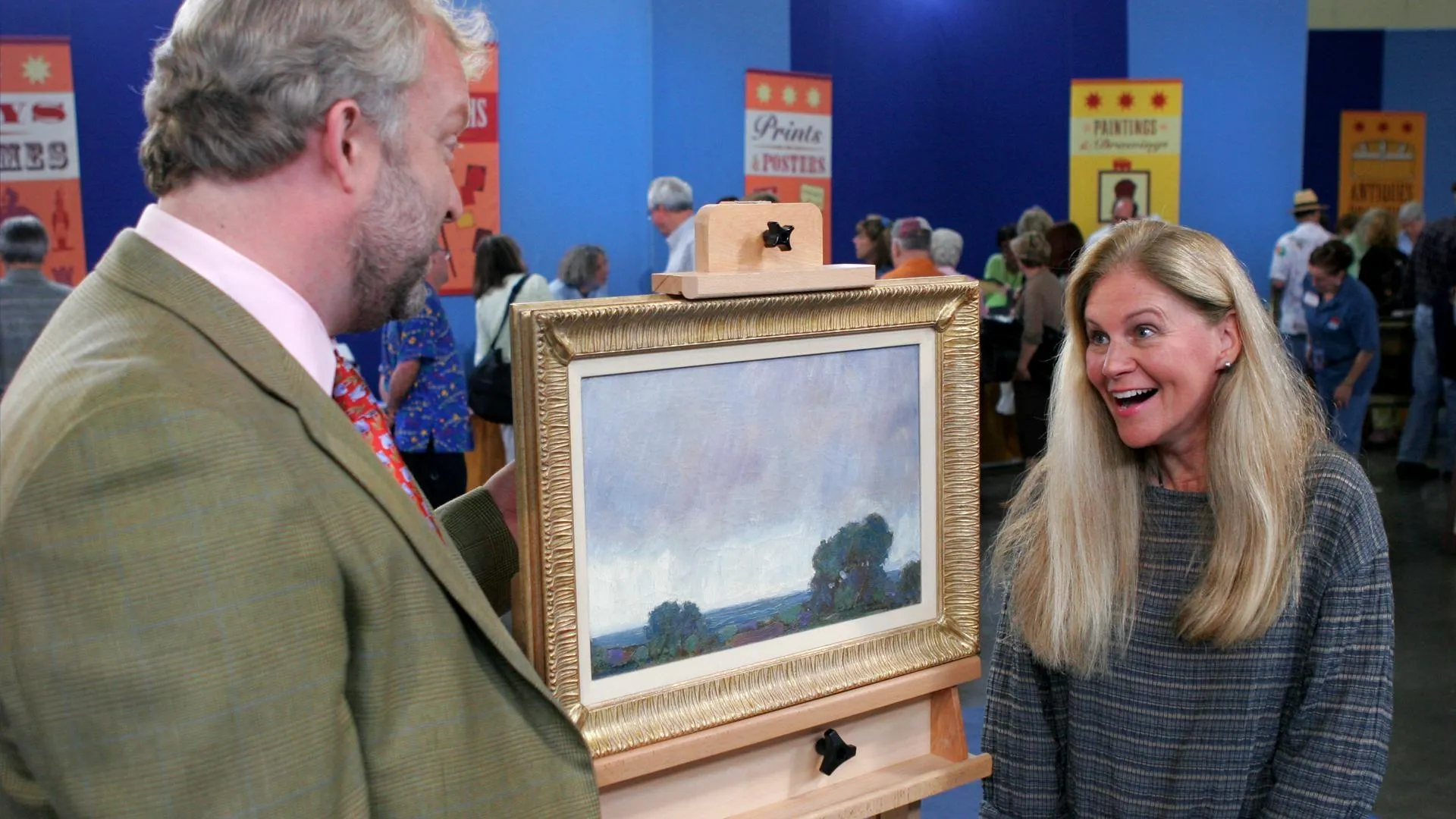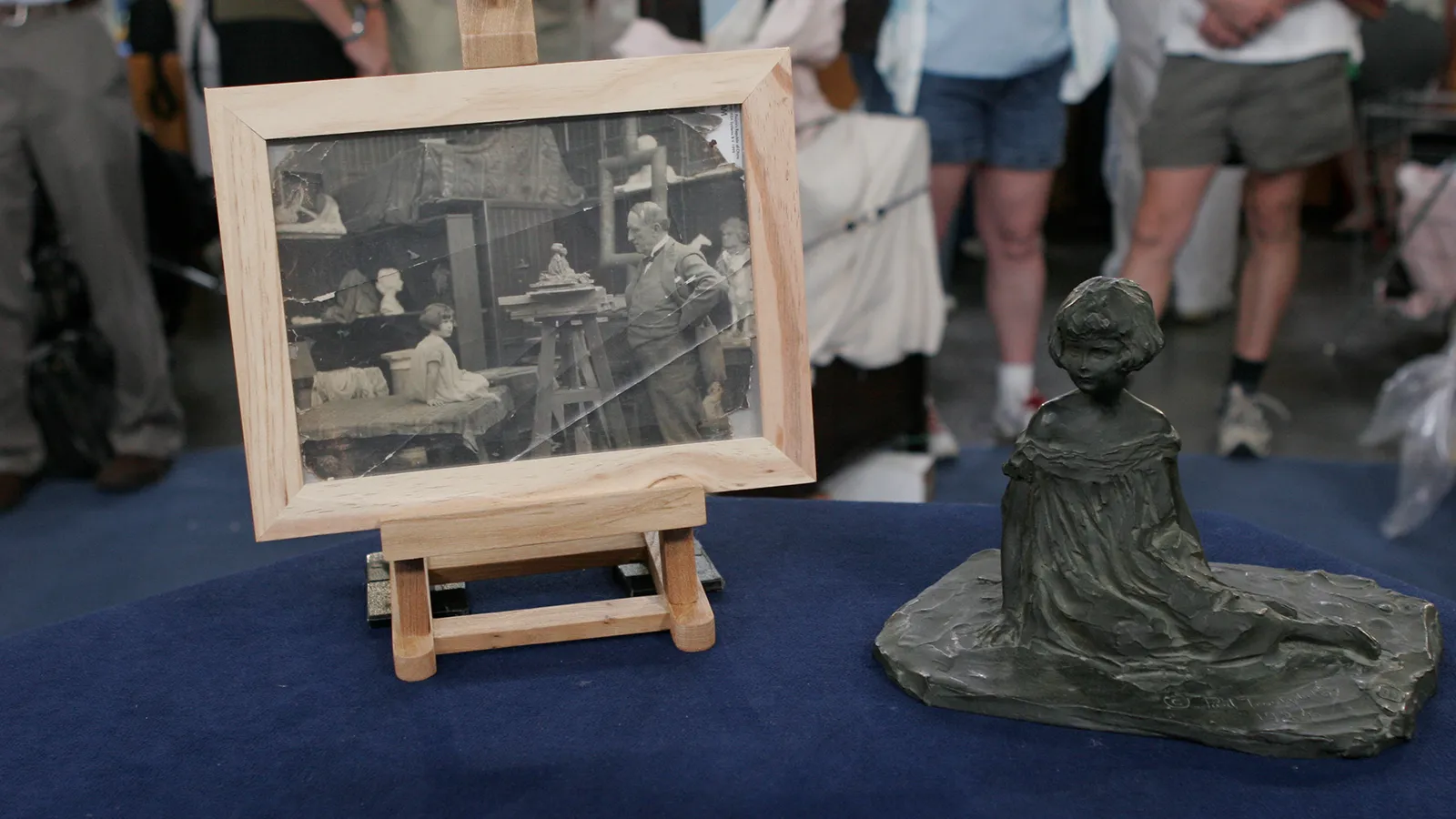GUEST: I bought it from a dealer that was in Long Beach, California, in the early 1970s.
APPRAISER: Okay.
GUEST: I went by his shop regularly.
APPRAISER: Were you looking for pieces like this in particular? A painted piece or...?
GUEST: Well, I always love painted pieces.
APPRAISER: Right.
GUEST: And we have a few in, in our home.
APPRAISER: Okay.
GUEST: And, um, when I saw the painting on it, I knew it was a pretty good piece, and I thought it was probably Pennsylvania.
APPRAISER: How much did you pay?
GUEST: I paid around, uh, $300. It may have been as much as $350.
APPRAISER: $300 to $350, not bad.
GUEST: Yeah, yep.
APPRAISER: In the '70s, early '70s.
GUEST: Right.
APPRAISER: First of all, you know you have a dower chest, right?
GUEST: Yes.
APPRAISER: And this chest is Pennsylvania, and I do think it's from probably the late 18th century.
GUEST: Okay.
APPRAISER: You have six beautiful painted tulips in these stylized vases, which was a very popular Pennsylvania German decoration. There was a lot of German settlement in Pennsylvania, and these symbolized love, so it makes sense that it'd be a dower chest, don't you think?
GUEST: Yes, absolutely.
APPRAISER: Okay, may we open it up? 'Cause I...
GUEST: You bet.
APPRAISER: I saw this newspaper in here. Tell us the story on that.
GUEST: Well, when I saw the chest, I loved the chest. But when I opened the lid...
APPRAISER: Yeah.
GUEST: And saw this newspaper article that's dated 1937...
APPRAISER: Right.
GUEST: And read the article, I found out that it was from the Somerset, Pennsylvania, area, and my mother and grandmother lived in this town, the town of Somerset in Somerset County.
APPRAISER: So it's rural, rural Pennsylvania. Isn't that a coincidence? You were in California buying a chest, and it turns out your family lived in the county it was made.
GUEST: And that's, when I saw that, I knew I had to have it.
APPRAISER: That is neat. This is white pine.
GUEST: Uh-huh.
APPRAISER: And they often painted these wonderful chests on a soft pine like this. And over there, that till, would you mind opening that?
GUEST: Uh-huh.
APPRAISER: That was a nice little place to store things. And I love these wrought-iron hinges, possibly made right in, either in Lancaster somewhere in, in Somerset County. And they've been there all those years. Look at that nice oxidation here, where the iron has seeped into the wood.
GUEST: Yes.
APPRAISER: Those are absolutely original, John, and really, really nice.
GUEST: Terrific.
APPRAISER: I mean, I love to, I love to see all that.
GUEST: Yeah.
APPRAISER: This has survived, actually, in, really, pretty nice shape. On this end, this is the nicest end, because you have the birds, again, with the tulips. And that paint didn't get beat up as much. There is, there's one repair. It's a repair on the whole back foot. Did you know that it was repaired?
GUEST: Okay. I, I thought there was some molding that had been repaired on it, yeah.
APPRAISER: Okay. Yeah, so there's a nice seam, and you can see that that whole piece of wood in the back foot, it's about 18 inches there, there is replaced. And that does affect the value of that.
GUEST: Yeah, sure.
APPRAISER: Well, did... You wanted to know value? Okay.
GUEST: Absolutely. I'd kind of like, also, to know, were these made by fathers of the girls? Or were they made by a local cabinetmaker?
APPRAISER: Good question, and my guess, looking at this piece and looking at the decoration and the moldings, is that this was made by a cabinetmaking shop.
GUEST: Okay.
APPRAISER: And it would have been purchased by the family for the daughter.
GUEST: Yes.
APPRAISER: Because it's too well done. The paint is made with a combination of some incised work and some freehand, and some stenciling. It was done by a place that made several of them. Just to give you an idea of retail value, this piece would easily be valued at $9,000.
GUEST: Uh-huh, terrific!
APPRAISER: You didn't do bad.
GUEST: Fantastic.












